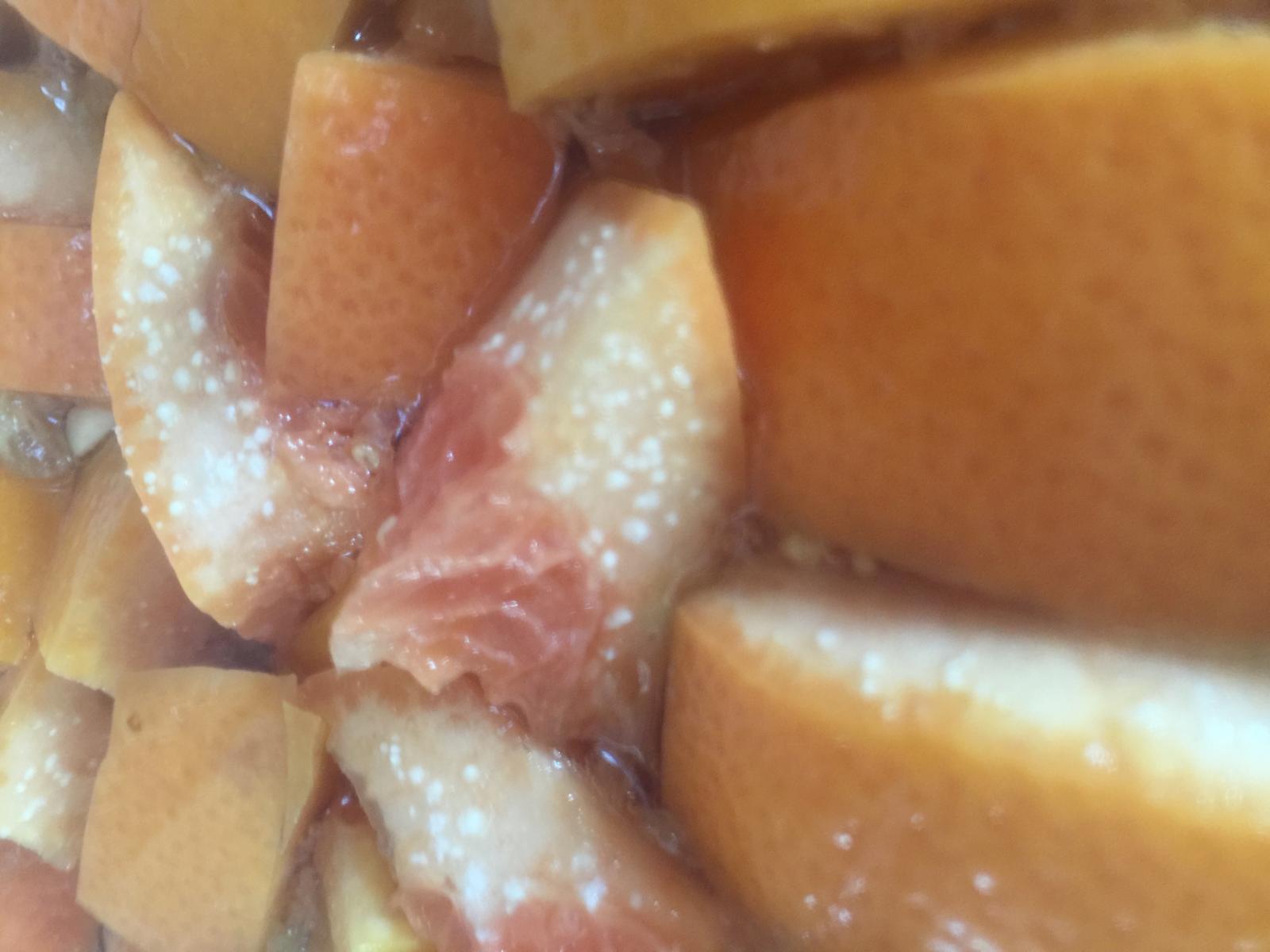jhlfrty
Active Member
- Joined
- Jun 17, 2016
- Messages
- 26
- Reaction score
- 2
Hi All -
I am in the midst of brewing an American Pale Ale kit purchased from Midwest. After about a week of first fermentation, I took a hydrometer reading and a taste. I was coming in about 1.5% ABV lower than the kit should have been. The kit said that first fermentation should last 7-10 days. The initial fermentation was pretty active for about 12 hours, but hadn't done much in a few days.
So I decided to to go off recipe a bit and added approximately 1.5 lbs of grapefruit to my secondary before I racked the beer. My intention was to enhance the intended citrus flavor of the kit and boost the ABV. After about 5 days I noticed small white dots growing on the fruit. Now, 2 days after I first noticed them, there appear to be a lot more of them. They don't appear to be like a spider web/fuzzy, as people typically describe mold ... but I want to be sure.
Does anyone have an of what this is? Have I ruined my batch?
Picture link below!
Thanks!


I am in the midst of brewing an American Pale Ale kit purchased from Midwest. After about a week of first fermentation, I took a hydrometer reading and a taste. I was coming in about 1.5% ABV lower than the kit should have been. The kit said that first fermentation should last 7-10 days. The initial fermentation was pretty active for about 12 hours, but hadn't done much in a few days.
So I decided to to go off recipe a bit and added approximately 1.5 lbs of grapefruit to my secondary before I racked the beer. My intention was to enhance the intended citrus flavor of the kit and boost the ABV. After about 5 days I noticed small white dots growing on the fruit. Now, 2 days after I first noticed them, there appear to be a lot more of them. They don't appear to be like a spider web/fuzzy, as people typically describe mold ... but I want to be sure.
Does anyone have an of what this is? Have I ruined my batch?
Picture link below!
Thanks!




